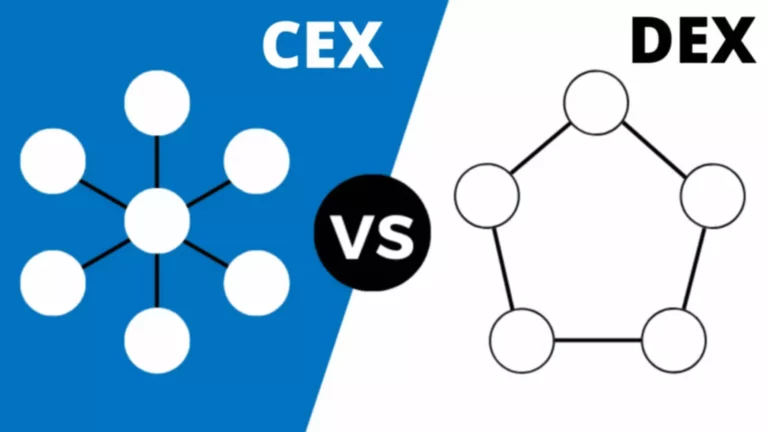Bitcoin’s programmability consists of limited scripting capabilities. The nonce is determined by combining the block’s data and a hashing algorithm. Finding the nonce requires a lot of computing power, and the Bitcoin network consumes substantial amounts of energy as a result. In order to add the next block to the blockchain, a miner needs to find the correct “nonce”, which is a random string of characters included in each block. Let’s highlight the main differences between Bitcoin and Ethereum to understand how these two leading cryptocurrencies stack up against each other.
As the number one and two biggest names in the market, they’re often compared with one another and on the surface they share many similarities. As such, users play by the rules, it enforces and the algorithm it uses to control content. The potential applications of Ethereum are wide-ranging and are powered by its native cryptographic token, ether (commonly abbreviated as ETH). In 2014, Ethereum launched a presale for ether, which received an overwhelming response. Although Bitcoin was not the first attempt at an online currency of this type, it was the most successful in its early efforts.
For example, the Ethereum ecosystem has been the subject of criticism for its alleged over-reliance on the RPC service provider Infura. At launch, Ethereum also used a Proof-of-Work consensus mechanism which was conceptually very similar to Bitcoin. This drastically reduced the amount of energy consumed by the Ethereum network. In this article, we’ll compare Bitcoin and Ethereum from multiple perspectives to help you understand the differences between the two cryptocurrencies and their use cases.

Many cryptocurrencies have gained importance or hold the promise to do so. Other important coins include Litecoin (LTC), Chainlink (LINK), Cosmos (ATOM), and Monero (XMR). Most cryptocurrencies today are derived in some form or another from Bitcoin, which uses open-source code and a censorship-resistant architecture. This ethereum vs bitcoin means anyone can copy and tweak the code and create their own new coin—which many entities do for various reasons. The TRON Foundation launched in 2017 to provide digital content makers full ownership rights through tokenization and dApps. The thought behind TRX’s launch was to give developers a way to create dApps.

Cryptocurrencies, also known as digital currencies, have been all the rage in recent years. Coins like bitcoin have skyrocketed, and financial institutions are starting to get on board. This article explores ethereum vs. bitcoin and will help you understand the pros and cons of each, so you can determine which one might be right for you. In conclusion, the primary differences that separate Ethereum VS Bitcoin are their purposes and their concepts. Also, Ethereum’s blockchain runs smart contracts – Bitcoin doesn’t, and instead, it only focuses on manual payment technology.
These services will provide you with a safe way of trading with others. Different exchanges will allow you to buy and sell BTC and ETH at different prices, and in different parts of the world. You can use Cryptoradar to compare your options based on your own criteria. As it exists currently, Bitcoin is not stable enough as a store of value to act as a currency. Like just about every other cryptocurrency (with the exceptions being those designed to tie to the price of fiat currencies like sterling and the US dollar).
If Bitcoin is “digital gold,” Ethereum is “digital oil.” In the long run, Ethereum will be the more valuable crypto because it has more practical uses. Granted, Bitcoin may have more avatars on social media trying to pump it higher, but Ethereum has more developers, entrepreneurs, and IT professionals bringing to life real-world applications. You can use Bitcoin to pay for transactions or sit on it as a long-term store of value, hoping it increases in value as a result of digital scarcity. But due to its underlying technological infrastructure, Bitcoin is much more limited than Ethereum. Ether is built to fuel Ethereum’s network and power transactions, while Bitcoin is known to be the currency of real-world operations. And more, of course — those are just the most obvious money-handling categories off the top of my head.
Lightning Labs, a Lightning Network developer recently released a statement announcing the ability to transfer other assets over the Lightning Network, like stablecoins. The announcement posits that the development will help transform the Bitcoin network into a globally accessible financial settlement layer for a multitude of different currencies. The Lightning Network is a second layer payment rail built on top of the Bitcoin network.
Many blockchain experts have claimed that the total number of coins would not be more than 100,000,000 ETH in the immediate future. First, many cryptocurrencies are trying to do the same thing as Ethereum, and some of these alternatives come with significant technology improvements. I count three Ethereum rivals among the top 12 cryptocurrencies by market cap. The https://www.xcritical.in/ number of Bitcoin transactions that take place in a day currently hovers around 260,000; for Ethereum, it’s about 1.2 million. As for the number of blocks that have been mined, for Bitcoin, it’s over 718,000, and for Ethereum it’s about 13 million. This has a lot to do with the fact that it takes a lot less time for a block to be added to Ethereum than to Bitcoin.
The underlying purpose behind each of these cryptocurrencies points to a significant difference. Ethereum is the basis for the exchange of ‘smart contracts’ between parties, and a decentralisation of the legal system. Its function as a store of value has emerged naturally over time, as more and more traders have been drawn to the coin, viewing it as a sensible alternative to BTC.
- For example, CoinShares offers the CoinShares Physical Ethereum ETP, and 21Shares offers the 21Shares Ethereum Staking ETP.
- Ethereum currently has a Proof of Work blockchain, although a proposed fork will switch it to Proof of Stake (PoS).
- A memecoin inspired by a memecoin, Shiba Inu (SHIB), rose to prominence in the fall of 2021, briefly surpassing Dogecoin’s market capitalization.
- Of the more than 1,600 available cryptocurrencies on the market, both Bitcoin and Ethereum are in the top three.
- That said, many users believe that KuCoin is one of the simpler exchanges on the current market.
Bitcoin is a store of cash and a way to transfer money to someone else. Ethereum is also a way to give money to others, but only when certain events happen. But because its development community is trying harder, I expect it will be a bigger winner than Bitcoin will be.
Markus and Palmer reportedly created the coin as a joke, commenting on the wild speculation of the cryptocurrency market. Cardano aims to be the world’s financial operating system by establishing DeFi products similar to Ethereum’s. It hopes to provide solutions for chain interoperability, voter fraud, and legal contract tracing, among other things. On July 22, 2023, Cardano had the seventh-largest market capitalization at $10.9 billion, and one ADA traded for around $0.31. Due to this rigorous process, Cardano stands out among its PoS peers and other prominent cryptocurrencies.
DeFi alone has grown to become a $66.18 billion industry with over $5.5 billion in daily trading volumes. At its peak this year, the total value locked (TVL) in various Ethereum-based DeFi protocols exceeded $88.7 billion. Both Bitcoin and Ethereum utilize a Proof-of-Work (PoW) consensus algorithm in which a global decentralized network of specialized hardware equipment secures the network in a process called mining. However, the Bitcoin consensus process has largely remained unchanged, while significant developments are happening in the Ethereum ecosystem. Ethereum plans to shift to a Proof-of-Stake (PoS) consensus algorithm where validators will secure the network instead of the miners.
